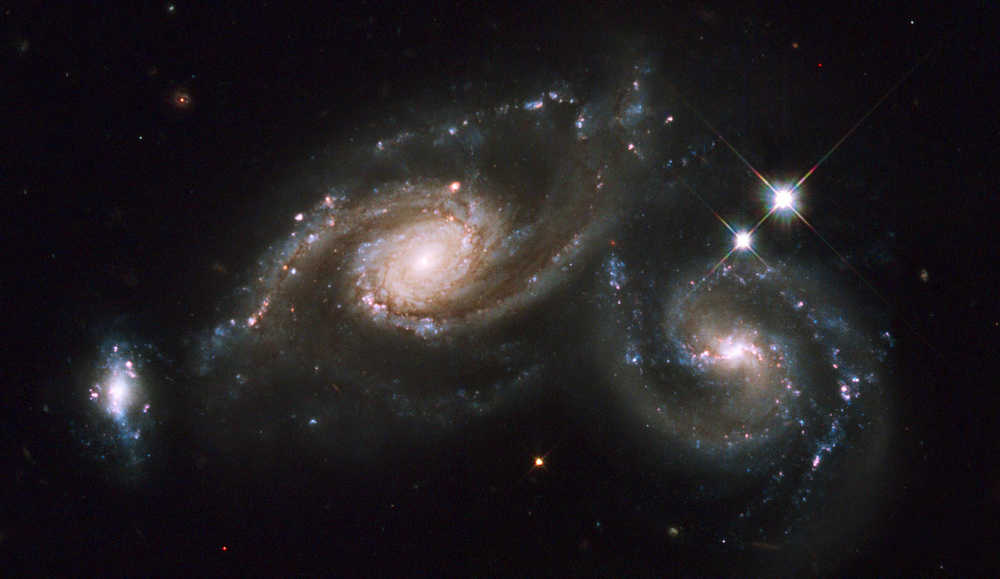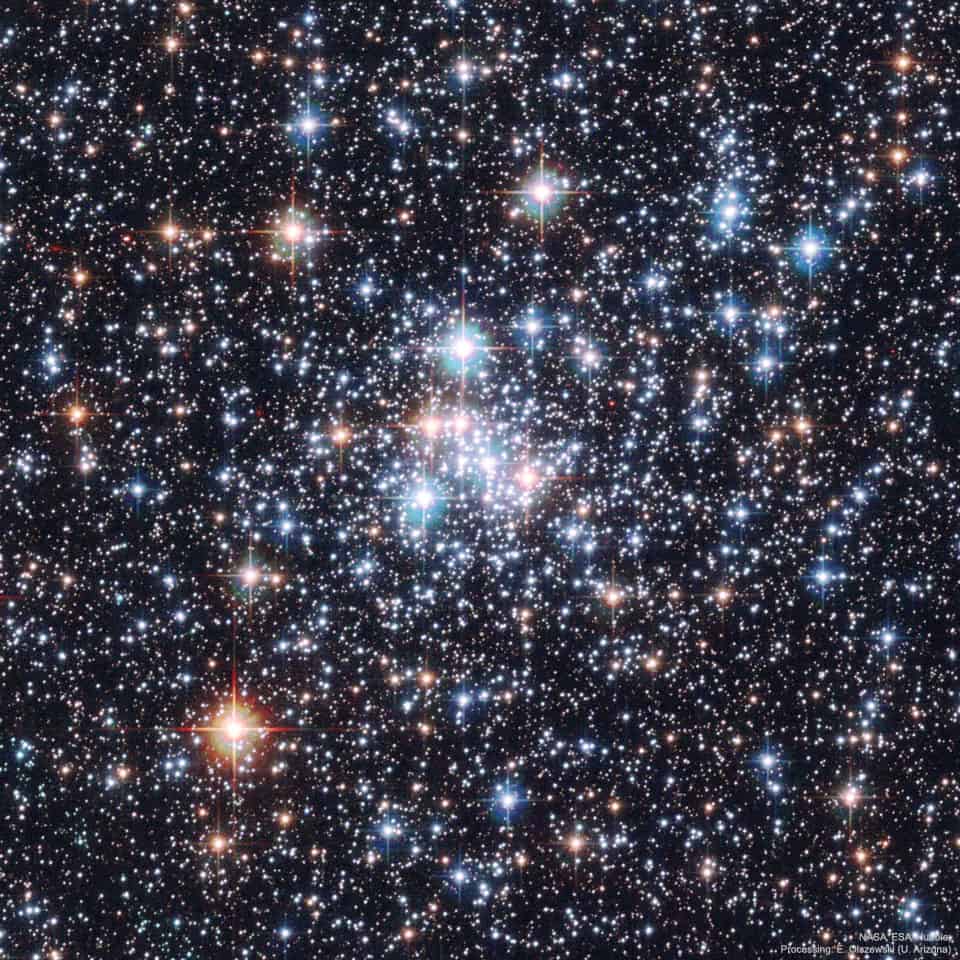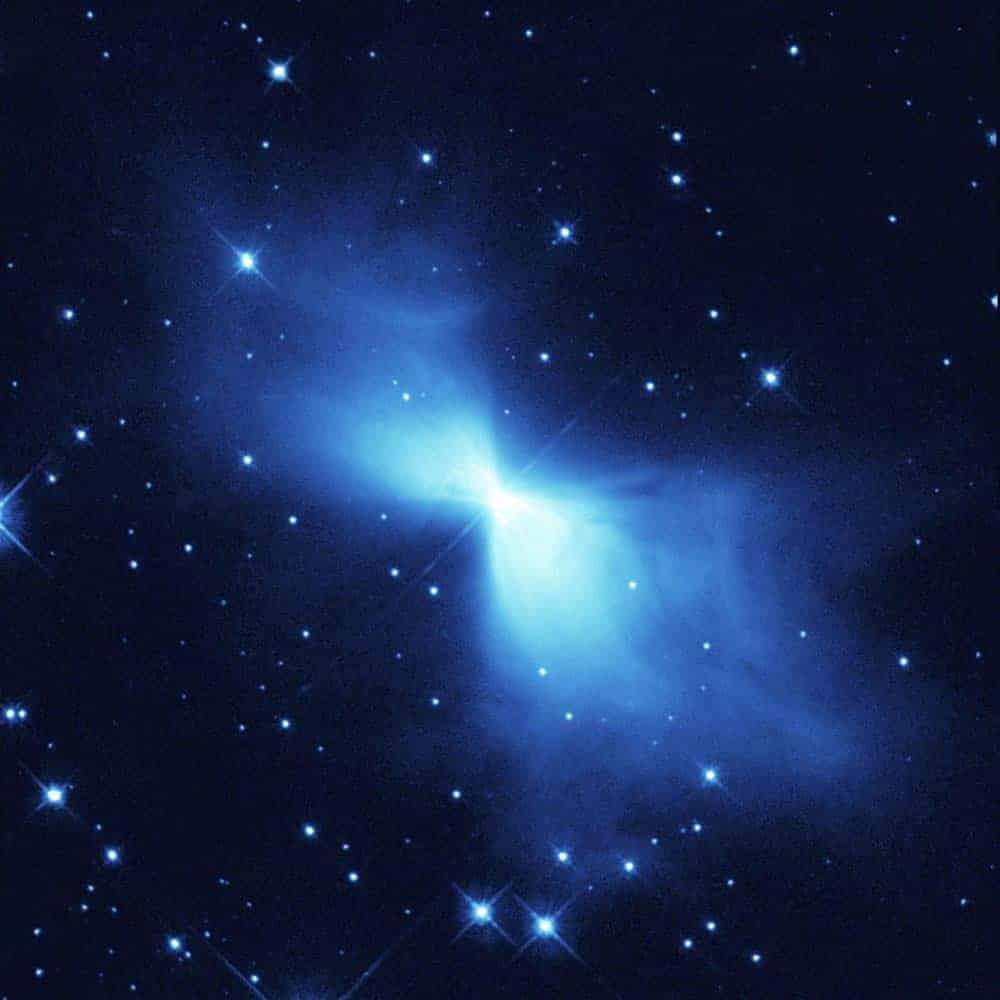Blog
Meet & Greet session at Wilder 1230-130 Great Rm & 130-230 Day Rm. Three Compas artists Nirmala Rajasekar, Benjamin the Mime and mick laBriola presenting a sketch of upcoming Residencies. Rhythm Roots Workshop Residency will run November 4-6-11-13th.

The NGC 5679 group, also known as Arp 274, is a triplet of galaxies, MCG+1-37-36, MCG+1-37-35 and MCG+1-37-34, spanning about 200000 light-years and at some 400 million light-years from Earth in the constellation Virgo. Arp 247 refers to the Atlas of Peculiar Galaxies, compiled by Halton Arp in 1966. Galaxies 269 through 274 in his catalogue are galaxies that appear to have connected arms.
NGC 5679 was imaged by Hubble in 2009, in a combination of blue, visible, infrared and Hα filters. The photograph shows that all three galaxies, especially the galaxies on the left and right, are starburst galaxies, meaning that there is currently a large amount of star formation in the galaxies. Interstellar dust can be seen between the areas of star formation. Two bright stars can be seen just above the galaxy on the right side; these are foreground stars that are actually part of our own galaxy.
Redshift measurements of the three galaxies give these radial velocity values, from left to right: 7483, 8654, and 7618 km/s.The relatively high redshift for the center galaxy means that it is much farther away – about 65 million light years (20 megaparsecs) behind the other two galaxies. Thus, the center galaxy is likely a background object. The NGC 5679 group was previously thought to be interacting gravitationally, however the newer Hubble image seems to confirm suspicions that the center galaxy is not interacting, as the galaxy arms are not distorted like typical interacting galaxies.

Duško Gojković (Serbian Cyrillic: Душко Гојковић; born 14 October 1931) is a Serbian jazz trumpeter, composer, and arranger.
Gojković was born in Jajce (ex-Yugoslavia, now in Bosnia-Herzegovina). He studied at the Belgrade Music Academy from 1948 to 1953. He played trumpet in dixieland bands and joined the big band of Radio Belgrade when he was eighteen. He moved to West Germany and recorded his first album as a member of the Frankfurt All Stars. He spent the next four years as a member of Kurt Edelhagen‘s orchestra.
In these years he played with Chet Baker, Stan Getz, and Oscar Pettiford. In 1958 he performed at Newport Jazz Festival and drew much attention on both sides of the Atlantic Ocean.
In 1966 he recorded his album Swinging Macedonia, produced by Eckart Rahn. The album contained original compositions inspired by the music of Balkans. In the years to follow he played with Miles Davis, Dizzy Gillespie, Gerry Mulligan, Sonny Rollins, Duke Jordan, and Slide Hampton.
He worked with the Kenny Clarke/Francy Boland Big Band from 1968–1973.
more...Pandit Nikhil Ranjan Banerjee (14 October 1931 – 27 January 1986) was an Indian classical sitarist of the Maihar Gharana. A student of the legendary Baba Allauddin Khan, Pandit Nikhil Banerjee was known for his technical virtuosity and clinical execution. Along with Pandit Ravi Shankarand Ustad Vilayat Khan, he emerged as one of the leading exponents of the sitar. He was a recipient of the Indian civilian honour of the Padma Bhushan.
Nikhil Banerjee was born on 14 October 1931 in Calcutta. His father, Jitendranath Banerjee, was an amateur sitarist and Banerjee was fascinated by his father’s playing. Although he wanted to try his hand at an instrument as early as the age of four, he was discouraged by his father and grandfather. At the age of five, however, they relented and he acquired a small sitar, initially learning under his father. Banerjee grew into a child prodigy.[citation needed] He won an all-India sitar competition and became the youngest musician employed by All India Radio at the age of nine. Jitendranath approached Mushtaq Ali Khan to take Nikhil as a disciple, but only learned from this master for a few short weeks. Instead Birendra Kishore Roy Chowdhury, the zamindar of Gouripur in present-day Bangladesh, became responsible for much of his early training. He also had considerable training under Pt. Radhika Mohan Maitra, before he went under the discipleship of Ustd. Allauddin Khan.
more...Robert Parker (born October 14, 1932) is an American R&B singer and musician, best known for his 1966 hit, “Barefootin’“.
Parker was born in New Orleans, Louisiana, United States, and started his career as a saxophonist, playing with Professor Longhair on his hit “Mardi Gras In New Orleans” in 1949. Over the next decade, he played with most of New Orleans’ musicians, including Fats Domino, Irma Thomas, and Huey “Piano” Smith. By 1958, he had started recording solo, having a local hit with the instrumental “All Night Long”. In 1965 he signed for Nola Records, and had his biggest hit with “Barefootin’”. It sold over one million copies, and was awarded a gold disc by the RIAA. Although he continued to record, he failed to repeat his success in terms of sales, and his recording career effectively ended in the 1970s. However, he continued to perform and tour for many more years, remaining especially popular in the UK.
https://www.youtube.com/watch?v=orjfH4bbTZ4
more...James “Son” Thomas (October 14, 1926 – June 26, 1993) was an American Delta blues musician, gravedigger and sculptor from Leland, Mississippi.
Born in Eden, Mississippi, Thomas was known as a folk artist for his sculptures made from unfired clay, which he dug out of the banks of the Yazoo River. His most famous sculpted images were skulls (often featuring actual human teeth), which mirrored his job as a gravedigger and his often stated philosophy that “we all end up in the clay”. In 1985, his work was featured in the prestigious Corcoran Gallery in Washington, D.C., where he was introduced to Nancy Reagan, then the First Lady. Thomas’s skulls are on display in the Delta Blues Museum, in Clarksdale, Mississippi, and the Highway 61 Blues Museum, in Leland, Mississippi. Thomas played at numerous blues festivals and private parties throughout the area, including the Mississippi Delta Blues and Heritage Festival in Greenville. In the 1970s, Eddie Cusic performed with Thomas at regular engagements. Together they recorded “Once I Had a Car”, which is included on the compilation album Mississippi Delta & South Tennessee Blues (1977).
In later performances he was accompanied by the Swiss harmonica player Walter Liniger. Thomas was recorded by several small record labels and is probably best known for his album Gateway to the Delta, recorded by Rust College in Holly Springs, Mississippi, but he remains an obscure figure outside of dedicated blues communities.[citation needed]
In the 1970s, he appeared in the films Delta Blues Singer: James “Sonny Ford” Thomas, Give My Poor Heart Ease: Mississippi Delta Bluesmen, and Mississippi Delta Blues.
Thomas died in 1993 in Greenville, Mississippi, from emphysema and a stroke.[2] He is buried in Leland and memorialized by a headstone placed in 1996 by the Mt. Zion Memorial Fund and paid for by John Fogerty. His epitaph consists of lyrics from one of his songs. His son, Pat Thomas, continues to play and perform his father’s songs.
https://www.youtube.com/watch?v=aaZ1G-NZHC4
more...https://www.youtube.com/watch?v=e_-Ek9bpTyI
more...The stars of open cluster NGC 290 glitter in a beautiful display of brightness and color. The photogenic cluster, pictured here, was captured in 2006 by the orbiting Hubble Space Telescope. Open clusters of stars are younger, contain few stars, and contain a much higher fraction of blue stars than do globular clusters of stars. NGC 290 lies about 200,000 light-years distant in a neighboring galaxy called the Small Cloud of Magellan (SMC). The open cluster contains hundreds of stars and spans about 65 light years across. NGC 290 and other open clusters are good laboratories for studying how stars of different masses evolve, since all the open cluster’s stars were born at about the same time.

more...
Paul Frederic Simon (born October 13, 1941) is an American singer-songwriter and actor. Simon’s musical career has spanned seven decades with his fame and commercial success beginning as half of the duo Simon & Garfunkel (originally known as Tom & Jerry), formed in 1956 with Art Garfunkel. Simon was responsible for writing nearly all of the pair’s songs including three that reached number one on the U.S. singles charts: “The Sound of Silence“, “Mrs. Robinson“, and “Bridge over Troubled Water“.
The duo split up in 1970 at the height of their popularity, and Simon began a successful solo career, recording three acclaimed albums over the next five years. In 1986, he released Graceland, an album inspired by South African township music, which sold 14 million copies worldwide on its release and remains his most popular solo work. Simon also wrote and starred in the film One-Trick Pony (1980) and co-wrote the Broadway musical The Capeman (1998) with the poet Derek Walcott. On June 3, 2016, Simon released his 13th solo album, Stranger to Stranger, which debuted at No. 1 on the Billboard Album Chart and the UK charts.
Simon has earned sixteen Grammys for his solo and collaborative work, including three for Album of the Year (Bridge Over Troubled Water, Still Crazy After All These Years, and Graceland), and a Lifetime Achievement Award. In 2001, he was inducted into the Rock and Roll Hall of Fame and in 2006 was selected as one of the “100 People Who Shaped the World” by Time. In 2011, Rolling Stone named Simon one of the 100 greatest guitarists. In 2015, he was named one of the 100 Greatest Songwriters of All Time by Rolling Stone. Among many other honors, Simon was the first recipient of the Library of Congress‘s Gershwin Prize for Popular Song in 2007. In 1986, he was awarded an Honorary Doctor of Music degree from Berklee College of Music, where he currently serves on the Board of Trustees. Simon was born on October 13, 1941, in Newark, New Jersey, to Hungarian-Jewish parents. His father, Louis (1916–1995), was a college professor, double-bass player, and dance bandleader who performed under the name “Lee Sims”. His mother, Belle (1910–2007), was an elementary school teacher. In 1945, his family moved to the Kew Gardens Hills section of Flushing, Queens, in New York City.
Pharoah Sanders (born Farrell Sanders, October 13, 1940) is an American jazz saxophonist.
Saxophonist Ornette Coleman once described him as “probably the best tenor player in the world”. Emerging from John Coltrane‘s groups of the mid-1960s, Sanders is known for his overblowing, harmonic, and multiphonic techniques on the saxophone, as well as his use of “sheets of sound“. Sanders is an important figure in the development of free jazz; Albert Ayler famously said: “Trane was the Father, Pharoah was the Son, I am the Holy Ghost”.
Pharoah Sanders was born on October 13, 1940 in Little Rock, Arkansas. His mother worked as a cook in a school cafeteria, and his father worked for the City of Little Rock.
An only child, Sanders began his musical career accompanying church hymns on clarinet. His initial artistic accomplishments were in the visual arts, but when he was at Scipio Jones High School in North Little Rock, Sanders began playing the tenor saxophone. The band director, Jimmy Cannon, was also a saxophone player and introduced Sanders to jazz. When Cannon left, Sanders, although still a student, took over as the band director until a permanent director could be found.
During the late 1950s, Sanders would often sneak into African-American clubs in downtown Little Rock to play with acts that were passing through. At the time, Little Rock was part of the touring route through Memphis, Tennessee, and Hot Springs for R&B and jazz musicians. Sanders found himself limited by the state’s segregation and the R&B and jazz standards that dominated the Little Rock music scene.
After finishing high school in 1959, Sanders moved to Oakland, California, and lived with relatives. He briefly attended Oakland Junior College and studied art and music. Once outside the Jim Crow South, Sanders could play in both black and white clubs. His Arkansas connection stuck with him in the Bay Area with the nickname of “Little Rock.” It was also during this time that he met and befriended John Coltrane.
more...Lee Konitz (born October 13, 1927) is an American composer and alto saxophonist.
He has performed successfully in a wide range of jazz styles, including bebop, cool jazz, and avant-garde jazz. Konitz’s association with the cool jazz movement of the 1940s and 1950s includes participation in Miles Davis‘s Birth of the Cool sessions and his work with pianist Lennie Tristano. He was notable during this era as one of relatively few alto saxophonists to retain a distinctive style when Charlie Parker exerted a massive influence.
Like other students of Tristano, Konitz was noted for improvising long, melodic lines with the rhythmic interest coming from odd accents, or odd note groupings suggestive of the imposition of one time signature over another. Other saxophonists were strongly influenced by Konitz, notably Paul Desmond and Art Pepper.
Konitz was born on October 13, 1927, in Chicago to Jewish parents of Austrian and Russian descent. At the age of eleven, Konitz received his first clarinet. However, he later dropped the instrument in favor of the tenor saxophone. He eventually moved from tenor to alto. His greatest influences at the time were the swing big bands he and his brother listened to on the radio; hearing Goodman on the radio was what prodded him to ask for a clarinet. He improvised on the saxophone before learning to play standards. Konitz began his professional career in 1945 with the Teddy Powell band as a replacement for Charlie Ventura. A month later, the band broke up. Between 1945 and 1947, he worked intermittently with Jerry Wald. In 1946, he met pianist Lennie Tristano, and the two worked together in a small cocktail bar. His next substantial work was with Claude Thornhill in 1947 with Gil Evans arranging and Gerry Mulligan as a composer. He participated with Miles Davis in a group that had a brief booking in September 1948 and another the following year, but he recorded in 1949 and 1950 the sides collected on the Birth of the Cool album. The presence of Konitz and other white musicians in the group angered some black jazz players because many were unemployed at the time, but Davis rebuffed their criticisms.
https://www.youtube.com/watch?v=Pw5lLoG-YWg
more...Raymond Matthews Brown (October 13, 1926 – July 2, 2002) was an American jazz double bassist known for extensive work with Oscar Petersonand Ella Fitzgerald.
Ray Brown was born October 13, 1926 in Pittsburgh, Pennsylvania and took piano lessons from the age of eight. After noticing how many pianists attended his high school, he thought of taking up the trombone but was unable to afford one. With a vacancy in the high school jazz orchestra, he took up the upright bass. A major early influence on Brown’s bass playing was Jimmy Blanton, the bassist in the Duke Ellington band. As a young man Brown became increasingly well known in the Pittsburgh jazz scene, with his first experiences playing in bands with the Jimmy Hinsley Sextet[a] and the Snookum Russell band. After graduating high school, having heard stories about the burgeoning jazz scene on 52nd Street in New York City, he bought a one-way ticket to New York. He arrived in New York at the age of 20, met up with Hank Jones, with whom he had previously worked, and was introduced to Dizzy Gillespie, who was looking for a bass player. Gillespie hired Brown on the spot, and he soon played with such established musicians as Art Tatum and Charlie Parker. In 1948, Brown left Dizzy’s band to start a trio with Hank Jones and Charlie Smith.
more...Arthur Tatum Jr. (/ˈteɪtəm/, October 13, 1909 – November 5, 1956) was an American jazz pianist.
Tatum grew up in Toledo, Ohio, where he began playing professionally and had his own radio program, rebroadcast nationwide, while still in his teens. He left Toledo in 1932 and had residencies as a solo pianist at clubs in major urban centers including New York, Chicago, and Los Angeles. Throughout his career, Tatum also played for long periods at night in after-hours venues – at which he was often more spontaneous and creative than in his paid-for performances – and drank enormous quantities of alcohol. Although drinking did not negatively affect his playing, it did damage his health. In the 1940s, Tatum led a commercially successful trio for a short time and began playing in more formal jazz concert settings, including at Norman Granz-produced Jazz at the Philharmonic events. Granz recorded Tatum extensively in solo and small group formats in the mid-1950s, with the last session occurring only two months before the pianist’s death from uremia at the age of 47.
Tatum is widely regarded as one of the greatest jazz pianists. His playing encompassed everything that had come before, added great harmonic and rhythmic imagination and complexity, and was often at very high speed. He extended what was considered possible in jazz piano and established new ground in jazz more broadly through innovative use of reharmonization, voicing, and bitonality. Tatum’s mother, Mildred Hoskins, was born in Martinsville, Virginia, around 1890, and was a domestic worker. His father, Arthur Tatum Sr., was born in Statesville, North Carolina, and had steady employment as a mechanic. In 1909, they made their way from North Carolina to begin a new life in Toledo, Ohio. The couple had four children; Art was the oldest to survive, and was born in Toledo on October 13, 1909. He was followed by Arline nine years later and by Karl after another two years. Karl went to college and became a social worker. The Tatum family was regarded as conventional and church-going.
The Boomerang Nebula is a protoplanetary nebula located 5,000 light-years away from Earth in the constellation Centaurus. It is also known as the Bow Tie Nebula and catalogued as LEDA 3074547. The nebula’s temperature is measured at 1 K (−272.15 °C; −457.87 °F) making it the coolest natural place currently known in the Universe.
The Boomerang Nebula is believed to be a star system evolving toward the planetary nebula phase. It continues to form and develop due to the outflow of gas from its core where a star in its late stage life sheds mass and emits starlight illuminating dust in the nebula. Millimeter scale dust grains mask portions of the nebula’s center so most escaping visible light is in two opposing lobes forming a distinctive hourglass shape as viewed from Earth. The outflowing gas is moving outwards at a speed of about 164 km/s and expanding rapidly as it moves out into space; this gas expansion results in the nebula’s unusually low temperature.
Keith Taylor and Mike Scarrott called it the “Boomerang Nebula” in 1980 after observing it with the Anglo-Australian telescope at the Siding Spring Observatory. Unable to view it with great clarity, the astronomers saw merely a slight asymmetry in the nebula’s lobes suggesting a curved shape like a boomerang. The nebula was photographed in detail by the Hubble Space Telescope in 1998 revealing a more symmetric hourglass shape.
In 1995, using the 15-metre Swedish-ESO Submillimetre Telescope in Chile, astronomers revealed that it is the coldest place in the Universe found so far, besides laboratory-created temperatures. With a temperature of −272 °C, it is only 1 °C warmer than absolute zero (the lowest limit for all temperatures). Even the −270 °C background glow from the Big Bang is warmer than the nebula. Aside from the CMB cold spot, it is the only object found so far that has a temperature lower than the background radiation.
Melvin Rhyne (October 12, 1936 – March 5, 2013, Indianapolis, Indiana), was a jazz organist best known for his work with Wes Montgomery. Melvin Rhyne was born in Indianapolis in 1936 and started playing the piano shortly after. At 19 years old, Rhyne started playing piano with then-unknown tenor saxophonist Rahsaan Roland Kirk but quickly switched over to the instrument that would make him famous: the Hammond B3 organ. Rhyne’s piano skills translated to the organ fluently and before long he was backing famous blues players like B.B. King and T-Bone Walker. In 1959 he was asked to join fellow Indianapolis musician Wes Montgomery‘s newly formed trio.
Rhyne then moved to Wisconsin and largely kept to himself for the next two decades. In 1991, however, he played on Herb Ellis‘s album Roll Call, Brian Lynch‘s At the Main Event, and his own album, The Legend. He continued to be prolific in the years to come, releasing eight more solo albums on the Criss Cross Jazz label. Rhyne also recorded with The Mark Ladley Trio for the 1992 release, Strictly Business and the 1994 release, Evidence. Both landed in the Jazz Charts at CMJ New Music Report and The Gavin Report. The group also appeared on a Jazziz Magazine sampler disc during that time. Altenburgh Records posthumously released, Final Call in 2013 by the same group.
More Posts
- The Cosmos with Abell 24
- Elton John
- Aretha Franklin
- Paul Motian
- Cecil Taylor
- Sweet Emma Barrett
- World Fusion with Mista Savona & Beatriz Márquez
- Daily Roots with Dandy Livingstone
- The Cosmos with NGC 604
- Paul McCandless
- Lee Oskar
- Boogie Bill Webb
- World Music with NOÊTA
- Daily Roots with the Paragons
- The Cosmos with NGC 7678
- Chaka Khan
- Robert Cage
- Louisiana Red
- Sticks McGhee
- World Music with Kasai Allstars
